Ever wondered how to achieve that verdant, carpet-like look in your aquarium?
Let’s explore the top 12 carpeting plants, each offering unique aesthetics and varying care levels.
- Related: 7 Rare & 11 Common Aquarium Mosses
- Related: Best Stem Plants
- Related: Top 16 Background Plants
- Related: Top 10 Aquarium Foreground Plants
From the beginner-friendly Java Moss to the enchanting Four Leaf Clover and the delicate Dwarf Baby Tears, this guide will help you discover the perfect carpeting plant for your aquarium setup.
Table of Contents
What Are Carpeting Plants?
Carpeting plants are a fantastic choice for those who want to create a lush, vibrant environment in their aquariums. Picture them as the underwater equivalent of your lawn, providing a dense green layer at the bottom of the tank.
These plants can spread out to form a “carpet,” giving a beautiful and natural-looking backdrop for your fish. Not only do they look great, but they also offer great hiding spots for smaller creatures and help maintain a healthy aquatic ecosystem by producing oxygen.
Just like the grass in your yard, these plants may need some trimming now and then, but they’re worth the effort for the unique look they bring to your tank.
The Benefits of Carpeting Plants
Carpeting plants are more than just a visual treat. They provide numerous benefits that contribute to a thriving aquarium environment:
- Natural Aesthetics: They help mimic the natural habitats of many aquatic species, creating a comforting environment for your fish.
- Safe Hideouts: They’re excellent at providing coverage, especially for smaller and more timid creatures, acting as safe hiding spots.
- Water Quality Maintenance: These plants are quite the little helpers, absorbing harmful waste products like nitrates and producing oxygen, thereby maintaining water quality.
- Algae Control: By competing for nutrients, carpeting plants can help discourage the growth of algae, thus reducing the occurrence of algae blooms.
- Substrate Stabilization: Their roots help stabilize the substrate in your tank, preventing it from being unsettled and floating around.
The Top 12 Carpeting Plants
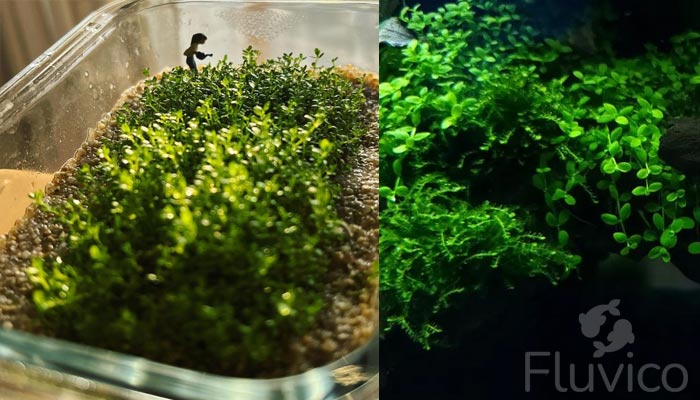
Micranthemum ‘Monte Carlo’
Micranthemum ‘Monte Carlo’ Micranthemum ‘Monte Carlo’ is a lush, fast-growing carpeting plant known for its dense mat of small, bright green leaves.
- Scientific Name: Micranthemum tweediei ‘Monte Carlo’
- Size: Grows up to 1-2 inches high, perfect for a tank’s foreground.
- Growth: Quickly covers the substrate in a few weeks under ideal conditions.
- Environment: Prefers nutrient-rich substrate and strong light, but adaptable.
- Aesthetic: Its bright green mat offers striking contrast with darker or redder plants.
- Habitat: Native to Argentina, but versatile in aquarium settings.
- Maintenance: Regular trimming is needed to maintain its carpet form and prevent light blockage.
- Water Temperature: Thrives between 20°C to 28°C (68°F to 82°F).
Dwarf Hairgrass
Dwarf Hairgrass, also known as Eleocharis parvula, is a popular choice for aquascaping enthusiasts due to its elegant, grassy appearance. It quickly forms a bright green carpet that mimics a mini underwater lawn, creating a spectacular aesthetic for any aquarium.
- Scientific Name: Eleocharis parvula
- Size: Grows between 3 to 5 inches tall, making it ideal for mid- or foreground placement.
- Growth: With ample lighting, it quickly forms a dense, lush carpet.
- Environment: Prefers light-rich environments and a nutrient-dense substrate.
- Aesthetic: Its slender, bright green blades create an illusion of an underwater meadow.
- Habitat: Found worldwide, it’s adaptable to a range of aquarium conditions.
- Maintenance: Regular trimming is recommended to maintain its height and density.
- Water Temperature: Does well in a temperature range of 20°C to 26°C (68°F to 79°F).
Blyxa Japonic
Blyxa Japonica is an attractive, grass-like aquatic plant that adds a touch of vibrancy to any aquarium. Despite its delicate appearance, it’s surprisingly hardy, making it a popular choice. Its bright green, slightly curved leaves create a stunning visual effect.
- Scientific Name: Blyxa Japonica
- Size: Grows between 4 to 6 inches tall, perfect for midground placement in your aquarium.
- Growth: Moderate growth rate, forms dense clusters over time.
- Environment: Thrives best in a light-rich environment with nutrient-dense substrate.
- Aesthetic: The bright green, slightly curved leaves create a stunning grassy effect.
- Habitat: Native to East and Southeast Asia, but highly adaptable to different aquarium conditions.
- Maintenance: Occasional trimming helps maintain its bushy form. Iron-rich substrates promote healthy growth.
- Water Temperature: Prefers warmer water conditions, between 22°C to 28°C (72°F to 82°F).
Dwarf Baby Tears
Dwarf Baby Tears, scientifically known as Hemianthus Callitrichoides ‘Cuba’, is a beautiful carpeting plant cherished for its tiny, vibrant green leaves. When properly cared for, it forms a dense, lush carpet that looks like a miniature forest under the water.
- Scientific Name: Hemianthus Callitrichoides ‘Cuba’
- Size: Tiny plant that grows up to 2 inches tall, making it perfect for foreground placement.
- Growth: Under the right conditions, it can quickly form a thick, vibrant carpet.
- Environment: Prefers strong lighting and CO2 supplementation for optimal growth.
- Aesthetic: Its tiny, bright green leaves create a stunning, dense carpet effect.
- Habitat: Native to Cuba, but versatile enough for various aquarium settings.
- Maintenance: Regular trimming helps maintain its carpet-like appearance. Nutrient-rich substrate supports its fast growth.
- Water Temperature: Does well in a range of temperatures, ideally between 20°C to 26°C (68°F to 79°F).
Java Moss
Java Moss, known scientifically as Vesicularia dubyana, is one of the most popular and easy-to-grow aquarium plants. Its delicate, feathery fronds spread quickly, creating a lush, green carpet that provides a natural and comforting environment for your aquatic pets.
- Scientific Name: Vesicularia dubyana
- Size: Can grow quite extensively without restriction, making it a versatile choice for all aquarium placements.
- Growth: Rapid growth, easily forms a dense carpet on any surface it attaches to.
- Environment: Adaptable to a wide range of conditions, including low light and poor nutrient levels.
- Aesthetic: Its soft, feathery green fronds add a natural touch and provide excellent contrast to other plant types.
- Habitat: Native to Southeast Asia, but it can flourish in almost any type of freshwater aquarium.
- Maintenance: Requires occasional pruning to prevent it from overtaking the tank. Easily propagated by division.
- Water Temperature: It’s comfortable in a wide temperature range, from 21°C to 24°C (70°F to 75°F).
Utricularia Graminifolia
Utricularia Graminifolia is a fascinating carnivorous carpeting plant that boasts bladder-like structures to trap tiny organisms. This unique trait, along with its eye-catching carpet of tiny, bright green leaves, adds a distinct and intriguing charm to any aquarium setting. They are harmless to fish, shrimp and mainly feed organism such as protozoa, tiny invertebrates, or even small insects
- Scientific Name: Utricularia Graminifolia
- Size: Typically grows up to 2-3 inches tall, ideal for foreground placement.
- Growth: A slow grower that requires patience to establish a lush carpet.
- Environment: Prefers strong lighting and a nutrient-dense substrate for optimal growth.
- Aesthetic: Its delicate, bright green leaves create an intricate, captivating carpet effect.
- Habitat: Originally from Southeast Asia, it is adaptable to various aquarium conditions.
- Maintenance: Requires attentive care and may need CO2 supplementation for optimal growth. Regular trimming helps maintain its carpet-like form.
- Water Temperature: Performs best in a temperature range of 22°C to 28°C (72°F to 82°F).
Four Leaf Clover
The Four Leaf Clover, or Marsilea quadrifolia, is an attractive and low-maintenance choice for aquascapers. It’s famous for its clover-like leaves, which can take different shapes based on the lighting conditions, adding an engaging and dynamic element to your aquarium.
- Scientific Name: Marsilea quadrifolia
- Size: Grows up to 2 inches tall, making it suitable for foreground placement.
- Growth: Moderate to fast grower, able to form a green carpet in a matter of weeks under good conditions.
- Environment: Adapts well to a range of lighting conditions, with leaf shape changing based on the light level.
- Aesthetic: Its clover-like leaves, which can be either single- or four-lobed, create a charming and unique carpet effect.
- Habitat: Found globally, from Europe to Asia, and adaptable to a wide range of aquarium conditions.
- Maintenance: Requires minimal care. Occasional trimming will keep it in check and maintain a dense carpet.
- Water Temperature: Thrives in a wide temperature range, from 18°C to 28°C (64°F to 82°F).
Anubias Nana Petite
Anubias Nana Petite is a charming, compact aquatic plant perfect for small aquariums or nano tanks. Renowned for its robust nature and diminutive size, it features petite, dark green leaves that form a lovely, miniature landscape, perfect for a tranquil aquatic environment.
- Scientific Name: Anubias barteri var. nana ‘Petite’
- Size: Only grows up to 2 inches tall, making it an ideal foreground plant.
- Growth: Slow grower, which helps to maintain its compact size.
- Environment: Adapts well to a wide range of lighting conditions, even in low light.
- Aesthetic: Its small, dark green leaves add depth and contrast, creating a miniature forest effect.
- Habitat: Native to West Africa, it’s versatile and can fit into most aquarium settings.
- Maintenance: Low maintenance plant that doesn’t require frequent trimming. Prefers to be tied to rock or wood rather than planted in the substrate.
- Water Temperature: Prefers warmer water conditions, thriving best in a range of 22°C to 28°C (72°F to 82°F).
Cryptocoryne Parva
Cryptocoryne Parva, known for its slender, bright green leaves, is the smallest of the Cryptocoryne species. Though slow-growing, its aesthetic appeal and adaptability make it a prized addition for any planted aquarium, offering a amazing underwater landscape.
- Scientific Name: Cryptocoryne Parva
- Size: Typically grows up to 2-3 inches tall, making it suitable for foreground placement.
- Growth: A slow grower, but can form a dense carpet over time.
- Environment: Tolerates a wide range of lighting conditions, but prefers moderate to high light for optimal growth.
- Aesthetic: Its slender, bright green leaves create a calming, grass-like carpet effect.
- Habitat: Native to Sri Lanka, but it’s adaptable to various aquarium conditions.
- Maintenance: Requires patience for growth and may benefit from nutrient-rich substrate and CO2 supplementation.
- Water Temperature: Does well in a temperature range of 22°C to 28°C (72°F to 82°F).
Thai “Little Star” Plant
Pogostemon Helferi, often referred to as the Thai “Little Star” plant, is a captivating and versatile addition to any aquarium. Known for its unique, star-shaped foliage, this plant adds an alluring, starry aesthetic that’s bound to turn heads.
- Scientific Name: Pogostemon Helferi
- Size: Grows up to 2-5 inches tall, making it suitable for both foreground and midground placement.
- Growth: Moderate to fast growth, quickly forming a thick, vibrant carpet with the right conditions.
- Environment: Prefers medium to high lighting conditions for optimal growth.
- Aesthetic: Its unique, star-shaped leaves create an eye-catching carpet, resembling a starlit sky.
- Habitat: Native to Thailand, it’s adaptable to various aquatic conditions.
- Maintenance: Requires regular trimming to maintain its form and keep it from overtaking other plants.
- Water Temperature: Thrives in a range of 22°C to 30°C (72°F to 86°F).
Crystalwort
Crystalwort, also known as Riccia fluitans, is a versatile and fast-growing aquatic plant. Its bright green, moss-like structure can float freely, creating a soft cloud in your tank, or it can be anchored down to form an enchanting, fluffy carpet.
- Scientific Name: Riccia fluitans
- Size: Grows up to 1-2 inches tall when anchored, making it suitable for foreground to midground placement.
- Growth: Rapid grower that can quickly cover large areas.
- Environment: Prefers moderate to high light to encourage dense growth.
- Aesthetic: Its bright green, fluffy texture adds a soft, cloud-like visual interest to your aquarium.
- Habitat: It’s a cosmopolitan species, found all around the world, and adaptable to a variety of aquarium conditions.
- Maintenance: Requires regular pruning to maintain its form and prevent it from overtaking the tank. Can be easily propagated by division.
- Water Temperature: Adapts well to a variety of temperatures, but it thrives in a range of 15°C to 30°C (59°F to 86°F).
Brazilian Micro Sword
The Brazilian Micro Sword, or Lilaeopsis brasiliensis, is a delightful carpeting plant that’s ideal for aquarists looking for a grass-like appearance. Its narrow, elongated leaves shoot up and bend gracefully, creating a dense, green carpet resembling a miniature meadow.
- Scientific Name: Lilaeopsis brasiliensis
- Size: Grows up to 2-3 inches tall, perfect for foreground placement.
- Growth: Moderate to fast growth rate, creating a thick carpet under optimal conditions.
- Environment: Prefers strong light and nutrient-rich substrate to promote dense growth.
- Aesthetic: Its slender, bright green leaves create a charming, grass-like carpet.
- Habitat: Native to Brazil, but adaptable to a wide variety of aquarium conditions.
- Maintenance: Requires occasional trimming to maintain its grassy appearance and may benefit from CO2 supplementation.
- Water Temperature: Thrives in a temperature range of 20°C to 26°C (68°F to 79°F).
What is the Best Carpeting Plant for Aquariums?
Choosing the “best” carpet plant for your aquarium depends on various factors, like your tank’s conditions and your level of experience.
For beginners, Java Moss is a great choice. It’s hardy, low-maintenance, and tolerates a range of lighting conditions. Plus, its lush, green growth adds a natural touch to your aquarium.
For those with more experience or CO2 setups, Dwarf Baby Tears (Hemianthus Callitrichoides ‘Cuba’) creates a stunning carpet effect. It’s a bit more demanding but rewards your effort with a beautiful, dense green carpet.
But remember, the “best” plant is the one that thrives in your specific aquarium and meets your aesthetic goals! Do a bit of research, and you’ll find the perfect carpet plant for your setup.
More Reading

15 Types of Cryptocoryne: Which is Best For Your Aquarium Setup?

16 Awesome Low Light Aquarium Plants (Mosses, Ferns & Stem Plants)


18 Types of Aquarium Moss: Photos, Care, Propagation & Growth Guide
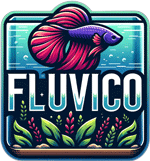
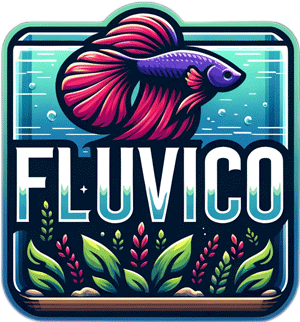

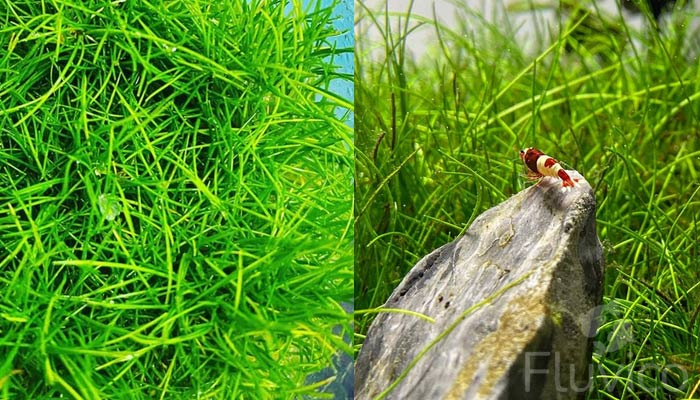
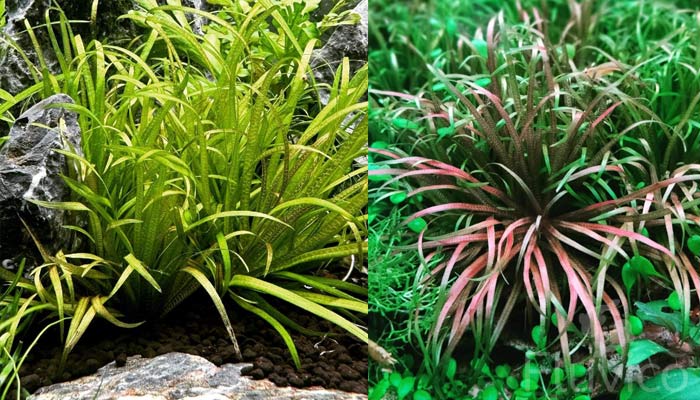
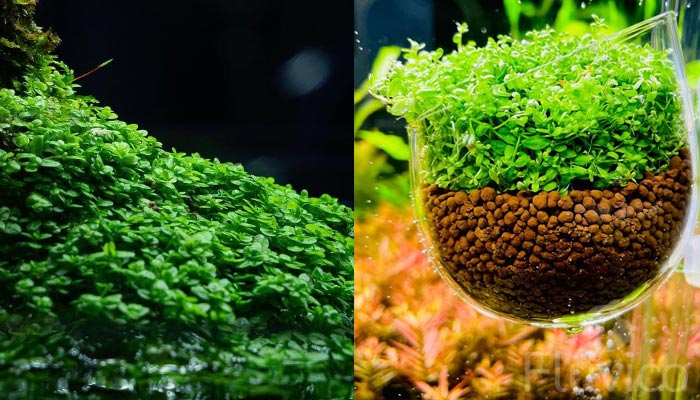
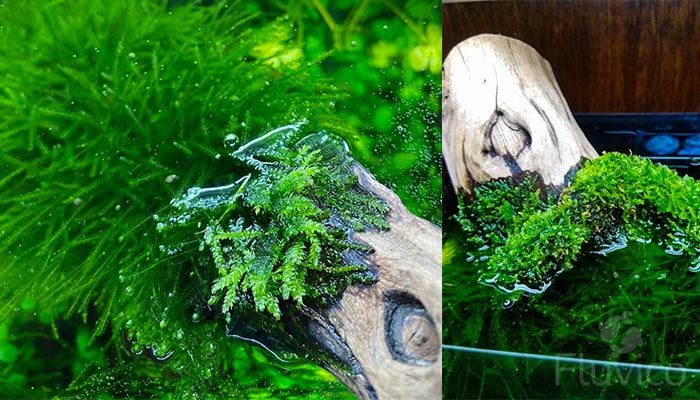
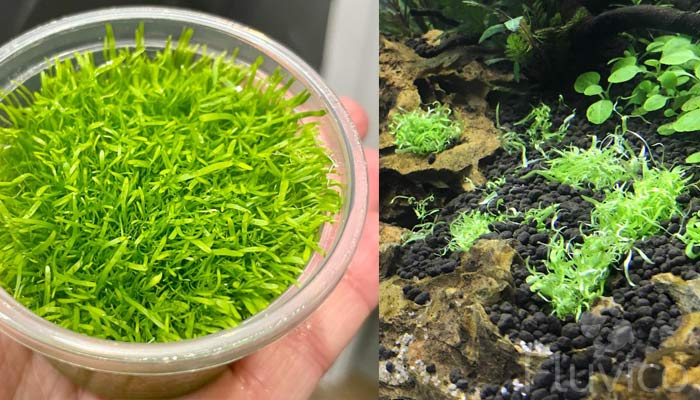
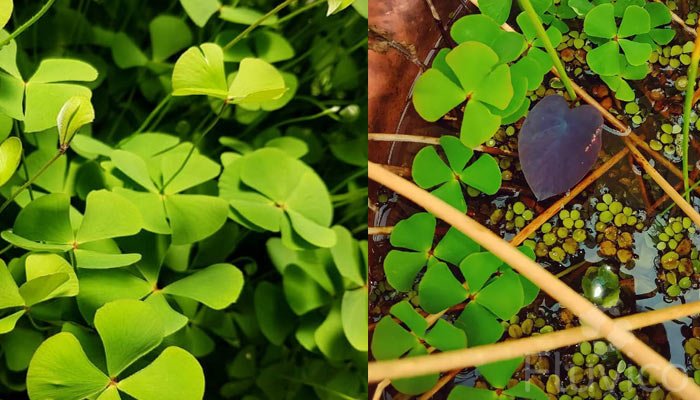
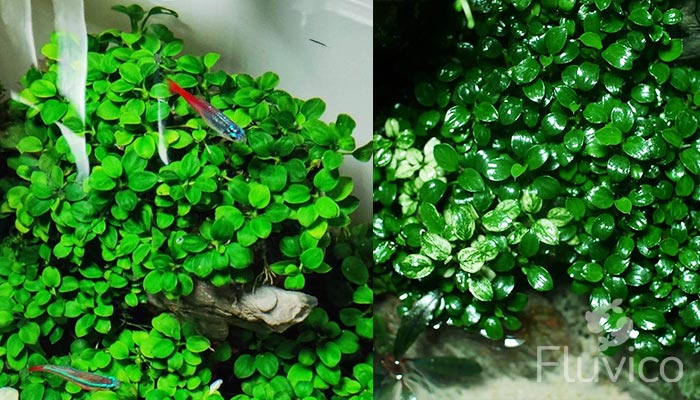

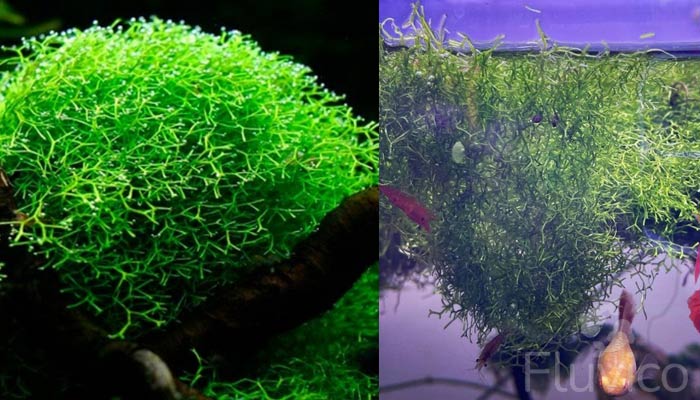

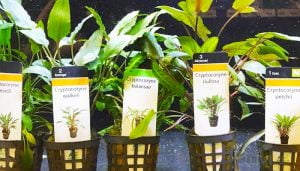
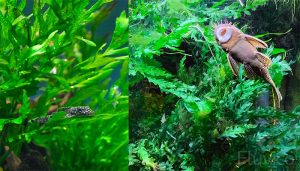
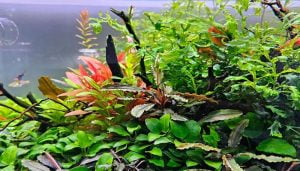

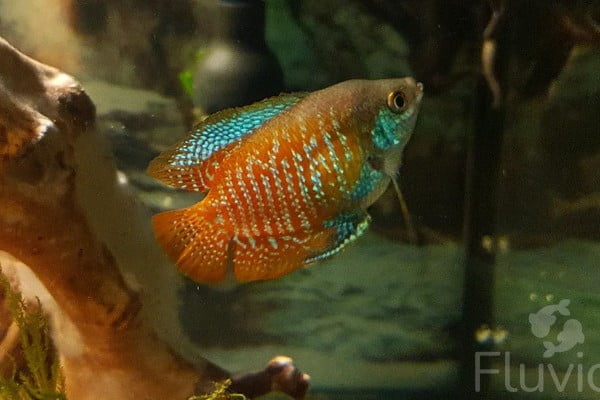
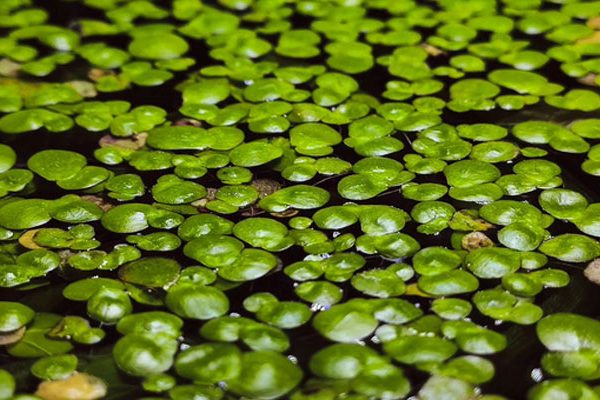
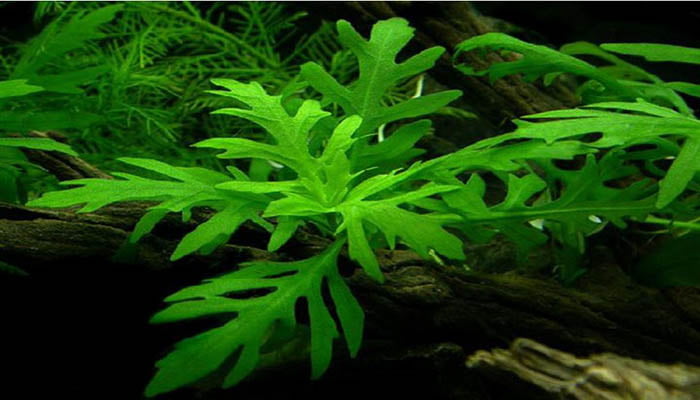
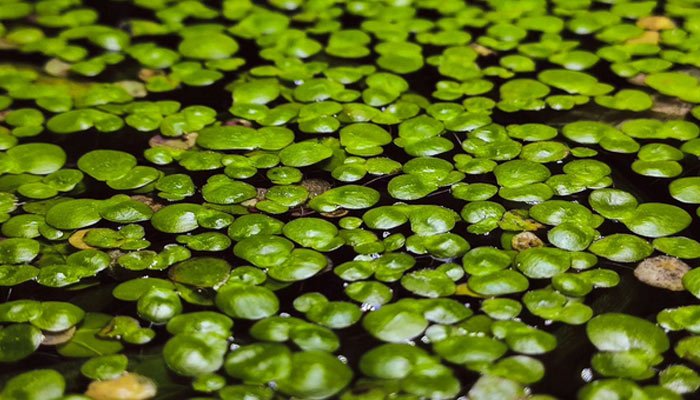
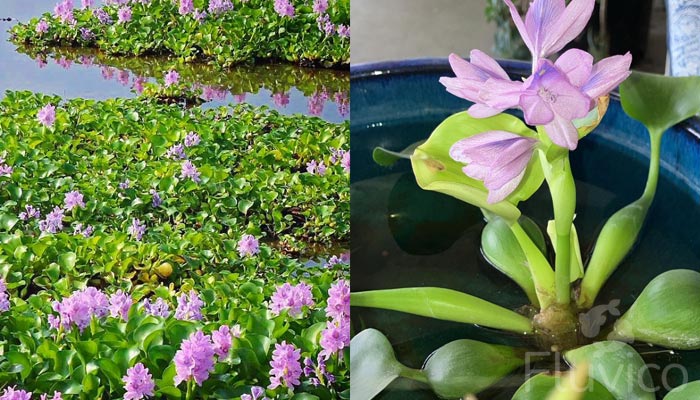
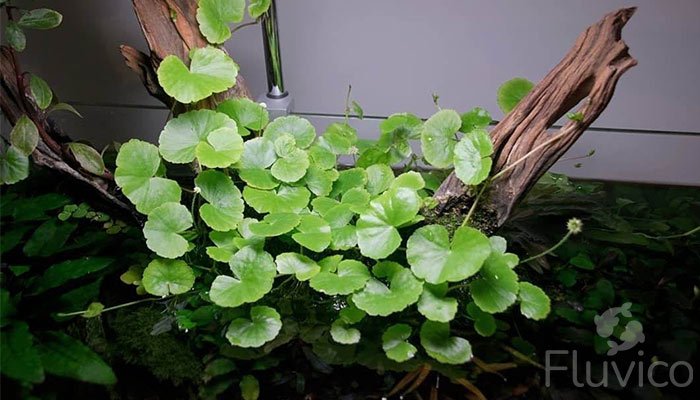
Hope you enjoyed our 12 Best Carpeting Plants!
If you have any questions? Ask away, we’re here to help!
All the best,
Daniel